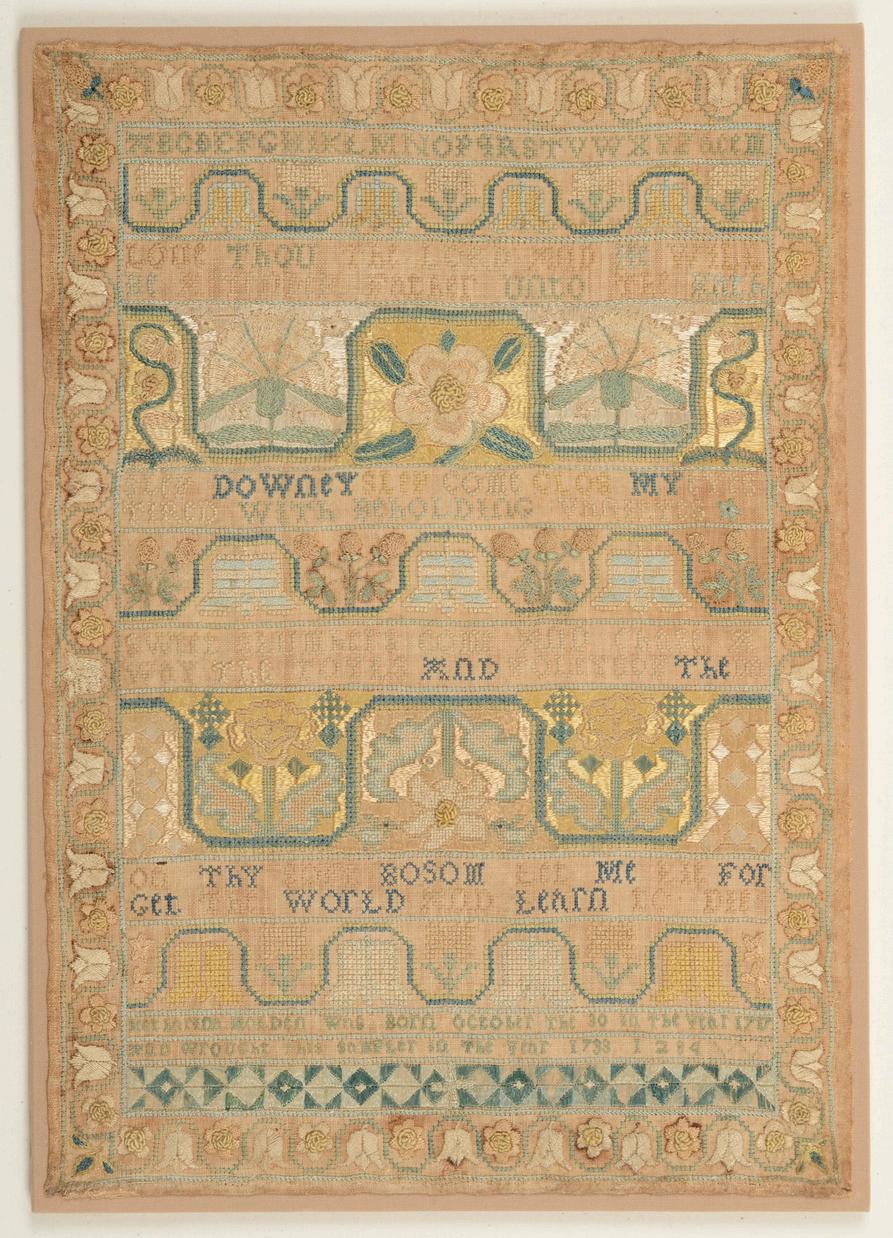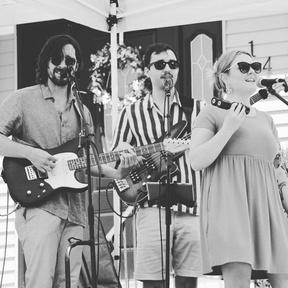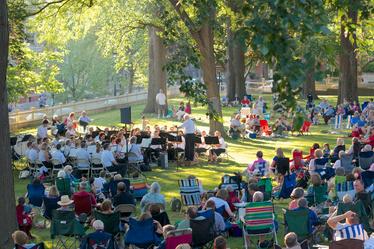

S P R I N G 2 0 2 4
CHAIR
Roberta E Gosselin
VICE CHAIR
Winifred E Brownell, Ph D
TREASURER
Mark F Harriman
SECRETARY
Peter J. Miniati, CFP, JD
Michael L. Baker, Jr. CPA
Charlotte Carrington-Farmer, Ph.D.
Alletta Morris Cooper
Paul A. Croce, Sc.D.
Michael Gerhardt
Meaghan E. Kelly, Esq.
Lori J. Lousararian, Esq.
Frank Mauran IV
Maureen Moakley, Ph D
Jeanette E Riley, Ph D
Alicia J Samolis, JD
Robert H Sloan, Jr
Theodore W Smalletz
Lane Talbot Sparkman
Stanley Weiss
Paul R Williams
EX OFFICIO
Erin Stevenson
EXECUTIVE DIRECTOR
C. Morgan Grefe, Ph.D.
Charmyne Goodfellow, Deputy Executive Director for Finance & Administration
Richard J Ring, Deputy Executive Director for Collections & Interpretation
Sarah Jane Carr, Director of Advancement & Public Engagement
Anne Conway, Director of the Museum of Work & Culture
Jerrad Pacatte, Director of Historical Research & Content Development
GOOD NEIGHBORS MAKE GOOD FENCES
by C. Morgan Grefe, Ph.D., Executive Director
On most days, I wouldn’t think I have much in common with Marsden Perry, former owner of the John Brown House, but, in fact, there are a few points of connection: He loved the crisp lines of the John Brown House, so he purchased it; I love sharing its incredible stories as a team member of the RIHS. He was one of the foremost collectors of Shakespeare; I really enjoyed reading Romeo and Juliet in junior high. I like to play Monopoly; he lived it.
But seriously, on a recent, lovely Saturday afternoon, I think I might have had a true Perry experience I stood for a moment in the middle of the Great Lawn, staring up at the John Brown House, and thought about how truly sublime this space is, and marveled at how many people it takes to make something like this possible. I’m sure Perry found himself thinking the same thing.
Seven years ago, conversations about the fate of this landscape began. Two years later, our Trustees were as moved as I was by the vision of our community committee. Their plan embraced both the history of the Olmsted Brothers’ plans and the 21st-century needs of a non-profit museum space. The board voted to make revitalizing this precious green space a priority of the RIHS’s 200th anniversary.
It was one thing to have an intention but quite another to find the funding to make it possible And little did we know that a global pandemic would so profoundly disrupt our lives and our project timeline But we did not stop, and our friends, neighbors, and foundations, both local and national, stepped up and helped to make our dream become a reality. We were only able to complete this project because of all of you. Your dedication not only to history but to accessibility and sustainability has allowed something beautiful to happen. You brought something to life, and it is loved and used every day.
Last summer, many of you came to our Concerts Under the Elms and saw a nearly completed landscape, but a few components had yet to be installed.
One that makes me the happiest is likely the most invisible. When you drive into our new parking area, there are now two dedicated ADA spaces Thanks to some careful regrading, the path leading from those spaces to the pergola is at a very comfortable ADA grade But then you get the historic brick path around the building
B o a r d o f T r u s t e e s
Cover: A 1791 sampler stitched by Judith Paul (ca 1777-1851) in Providence, RI under the expert guidance of her teacher Mary Balch. RHi X17 1514.
We were c wanted to travel from entrance o we didn’t w and lose th setting Th were able the histori almost unn previous s bricks on e precise wo beauty of t it feels like
In fact, I th project. Th designed by the Olmsteds. The “specimen” trees complement those already established in the landscape. The ground plantings, while far fewer, are the same varieties the original designers chose more than 120 years ago

Letter from Marsden Perry to the Olmsted firm. Courtesy of the Olmsted archives. April 18, 1904. Gentlemen:- I perhaps stated the case too strong when I said I should regard you as responsible for the life of the shrubbery What I expect is that you will send down a man or men of sufficient intelligence to engage the proper help, and see that the planting is done in the very best manner I am not myself able to give it any attention, and I have no one who can Very truly yours, Marsden Perry
Of course, one thing we added that the Olmsteds did not include is electricity While the Olmsted Brothers did more private commissions than their famous father, Frederick Law Olmsted, their ethos was much the same. They wanted to create outdoor spaces for contemplation and respite, not sport. And, remember, this was a

private yard for a single-family home, no matter how grand it was. Now, it is a space for us to continue our exploration of the past and a place to connect with our communities in programs like our concerts This new plan allows for a much more graceful and safer environment for all to enjoy. And yes, it is still a space that provides ample opportunity for quiet moments and contemplation. It just also happens to be great for food trucks as well!
In the end, I probably don’t have that much in common with Perry, but this much I know is true: we both believed deeply in the power of a landscape to provide solace in an urban environment. I am so very grateful for that work more than a century and a quarter ago because it gave us such keen inspiration. So, for that, I thank Marsden Perry. And for this project, I thank all of you for your support, your patience, and your belief that while we study and share the past, we also share this present moment, and this newly restored Great Lawn is the perfect place to enjoy that.
Putting Down Roots Donor Reception featuring the final planting of the Great Lawn: a Valley Forge Elm

CELEBRATE SUMMER AT THE MUSEUM OF WORK & CULTURE
by Béatrice Duchastel de Montrouge, Public Programs Coordinator
Visiting the Museum & Special Exhibits
With school out of session and the weather getting warmer, summer is a perfect time for a family trip to Woonsocket and the Museum of Work & Culture.
The 2024 gold medal winner of O-N Radio’s Best of the Blackstone Valley award for Family Fun, the MoWC is your destination for interactive exhibits, programs, and immersive educational experiences that visitors of all ages can enjoy.
In addition to exploring the Museum’s permanent exhibits, this summer guests will have the chance to see two temporary exhibits in our changing gallery.
On display through June 29th, the Mount Saint Charles High School 100th Anniversary exhibit provides visitors with the opportunity to discover and celebrate the storied past of Mount Saint Charles through photos, yearbooks, pins, and other memorabilia. Founded in 1924 by Monsignor Charles Dauray as a school for Woonsocket’s burgeoning community of French-Canadian immigrants, today Mount continues as one of the few remaining Catholic schools in Woonsocket and is a true source of pride for the city.
Opening on Friday, July 5th, Charting History:
Navigating the Currents of Rhode Island’s Past, a joint project between the RIHS and Newport Historical Society, tells one cohesive, chronological narrative of Rhode Island’s history following major threads of commerce, conflict, and conscience This traveling exhibit shares the stories of Rhode Island and the people who have lived here throughout history up to the present-day.
Programs for All Ages
In addition to the new exhibits, the Museum will be offering special events and educational programs throughout the summer.
On Friday, June 7th, the MoWC will celebrate SaintJean-Baptiste Day, Québec’s National Holiday, with a sea shanty concert featuring award-winning musician Seán Dagher Dagher is a celebrated folk singer and multi-instrumentalist from Montréal best known for his YouTube series “Shanty of the Week” and his recordings used in the video game Assassin’s Creed Black Flag. Tickets for the concert and a pre-concert party are available at rihs.org.
For those with young history lovers at home the museum will be offering its annual summer camp in association with the Rhode Island Department of Education. From July 22 - 26, Junior Historians who will be entering grades 5 - 9 for the 2024-2025 school year are invited to “Fiber to Fabric: Past and Present.” Campers will learn the process of textile production and how the textile industry has affected Rhode Island’s history, from pre-colonial times to today. Participants can register at https://enrollri org/acn


a bouzouki. Use the QR code to hear him!
Seán Dagher
playing
U P C O M I N G M E M B E RE X C L U S I V E P R O G R A M S E
WED, JUNE 12
Get a behind-the-scenes tour of Hope & Main and discover how Rhode Islanders are continuing historic foodways with modern products.


Play ball with Rhode Island’s own Providence Grays at the Rocky Point Historic Base Ball Festival!
SAT, JULY 13 SUN, AUG 18 WED, SEPT 18
Go behind the scenes at Kenyon Grist Mill, which has been grinding for three centuries . Sample johnny cakes and enjoy a summer kayak ride.


Join us as we join forces with the RISD Museum to explore the textile collection of Lucy Truman Aldrich and her legacy.
x p l o r e “ M a k i n g H i s t o r y ” A l l S u m m e r L o n g
 by Richard Ring, Deputy Executive Director for Collections and Interpretation
by Richard Ring, Deputy Executive Director for Collections and Interpretation

In honor of the Rhode Island Historical Society’s 2024 annual theme, “Making History,” we have placed in the Aldrich House exhibit room an array of items from the collections that have been stitched, drawn, fashioned, forged, cast, composed, carved, painted, written, or otherwise “made” in Rhode Island or by Rhode Islanders that have not been displayed recently. This exhibit, Making History: Handmade in Rhode Island, will be on display for the remainder of 2024.
This eclectic array includes Augustus Rose’s (1873–1946) drawn designs of hammers, hat pins, and watering cans, as well as his metal crafts shop sign; various enamels and a mortar and pestle used in the jewelry industry; Joseph Brown’s (1810–1872) watchmaking tools, as well as his pocket watch; handtranscribed and printed sheet music owned by Sally Brown Herreshoff (1773–1846); a violin crafted by Thomas D Paine (1812–1895); and a hand-drawn map by Mary A Wallcott (1815–1870)
The exhibit also features the skilled work of early Rhode Island women. One example is the portrait of author Catherine Williams by painter Susannah Paine. Williams published ten books of poetry, fiction, and nonfiction between 1828 and 1845 to support her daughter and herself following a divorce. Both she and Paine were part of a cohort of female makers in Providence during the 1830s.
The RIHS holds a world-class collection of over 100 samplers and embroideries. View our online sampler gallery by following the QR code!


We are particularly proud of the selection of samplers on display. Forty years ago, the traveling exhibition Let Virtue Be A Guide to Thee: Needlework in the Education of Rhode Island Women, 1730- 1830, debuted at the Rhode Island Historical Society before moving to the Museum of Fine Arts in Houston, Texas, and concluding its tour at the Metropolitan Museum of Art in New York.
Betty Ring, the foremost authority on antique American needlework, curated the exhibition from the RIHS's rich collection of samplers. Now, some of the pieces she originally selected are back on display.
The sophisticated needlepoint samplers made by Rhode Island women remain highly sought after even today. The two samplers shown on these pages display the continuation of teaching by women to girls
Portrait of Catharine R Williams, ca 1835 by Susannah Paine (1792-1862) RHi X17 1538
of the now-called Rhode Island style patterns.
Sampler-making among elite white New England women evolved from a female craft tradition brought over from Europe in the seventeenth century into a distinctive decorative art form. Needlework samplers stitched by New England women exhibited more color, texture, and ornamental design than their European predecessors. By the eighteenth century, samplermaking had developed into a more formal craft, and genteel women received training in schools run by skilled female artisans like Mary Balch of Providence At a time when educational opportunities for women were rare, young women from well-to-do families learned to read, write, embroider, and stitch at these schools, skills that enabled many to live more autonomous lives than their less educated female counterparts.
While samplers were primarily made by young women, the age of their creators does not lessen the level of craftsmanship showcased. “[Many of the items] chosen for our display were objects that previous generations . . . had described with diminishing terms such as ‘folk art,’ ‘schoolgirl efforts,’ ‘self-taught,’ and ‘amateur,’ to differentiate


them from the work of ‘professional artists’ represented in our decorative arts collection, like furniture makers,” said RIHS Cabinet Keeper Dana Signe-Munroe. “Each object we chose was made with the same focus, dedication, and creative spirit as a ’professional artist,’ and they continue to educate and inspire the people of Rhode Island.”
When people trace the legacy of Rhode Island’s artistic excellence, many will include the founding of our seminal creative institutions, such as the Rhode Island School of Design and the Providence Art Club, as well as those companies that blended art and industry, like Gorham Manufacturing. Yet, the abilities of those who have called Rhode Island home to produce lasting and exceptional works of craftsmanship extend to its earliest days We are excited to share these examples and many more throughout 2024 during regular business hours and before all special events hosted at the Aldrich House.
Jane Whitman (1747-1765) stitched this sampler at 9 years of age. The motifs are similar to Katherine Holden’s sampler of twenty-three years previous. RHi X17 1595.
Sampler by Katherine Holden (1717-1807), 1773 This is the earliest sampler in the RIHS collection RHi X17 1514

GET TO KNOW: ENA FOX
In 2023, the RIHS in collaboration with the City of Providence’s Department of Art, Culture, and Tourism received funding from the Mellon Foundation to launch the Providence Commemoration Lab (PCL). This grant comes as a continuation of our partnership to create Providence’s Inventory for Commemorative Works a growing online archive of the city’s commemorative landscape In addition to expanding that database, the focus of the PCL is to support local artists in connecting with the communities surrounding Columbus Square, Roger Williams Park, and Public Street as they explore the meaning of commemoration and create new, temporary commemorative projects at each site. Ena Fox serves as Providence Commemoration Lab Director, leading these efforts and working with the selected artists as they tackle engaging the community and creating these new works.
What was your professional background before coming to the RIHS?
I started out as a student of American and African history, ended up with a fine arts degree in sculpture, and devoted the first half of my career to teaching in the classroom and as a teaching artist. Since then, I’ve been involved in historic resource interpretation, managing large creative placemaking projects, and museum education.
Prior to joining in this exciting project with RIHS and the City’s Art, Culture and Tourism department, I developed new interpretive and community programming for the recently
reopened Roxbury Heritage State Park, which sits in the cultural heart of Boston’s Black community and features a colonial-era house. I was project manager for two different creative placemaking initiatives in Boston, each bringing together artists, community organizations, and local businesses to help neighborhood residents reimagine and advocate for creative economic opportunities, public spaces, and transit changes.
And, as Director of Education at the Institute of Contemporary Art for eight years, one of my proudest accomplishments was launching the museum’s first teen arts council, which has since become central to the museum’s teen programs.
What does Commemoration mean to you?
I think of commemorative sites as spaces of collective remembrance and public honoring These sites and monuments tell us what histories, events, places and people we as a society value or don’t. I’m interested in how the meaning of commemorative sites and monuments changes over time.
I participated in the public conversation around the recent removal of the Emancipation Group monument in Boston, which depicts Lincoln gesturing over a kneeling Black figure rising from broken shackles.
A group of formerly enslaved people raised money to fund the original statue in the 1870s. Today, a different generation of Black Bostonians in a different context found it paternalistic and emotionally hurtful to honor the “Great Emancipator” while degrading the agency of African Americans who fought for their own liberation.
I also think about commemoration as the collective gestures of grief, loss, remembrance, and respect that resonate beyond the moment and endure in memory as much as permanent monuments. Such as the site of 9/11, where in the weeks and months following the horror, the fencing around the gaping wound became a spontaneous memorial, where people posted hundreds of photos and pleas for missing loved ones, along with messages of sympathy, loss, and love. I visited the site then and, as someone who had previously lived in New York City, that experience became my memorial.
I attended the reinterment ceremony for the remains of 419 Africans who had been enslaved in
NYC in the eighteenth century and disturbed from their burial ground in lower Manhattan by a construction project in the 1990s. The African Burial Ground (ABG) National Monument now marks a small portion of the original burial ground site, forever sacred ground.
The ceremonial return of the ancestral remains and the monument are both part of remembering, mourning, celebrating, and learning about African Americans in NYC. I participated in the ABG research, which handled the ancestral skeletal remains The intersection of collective remembrance and personal memory (including ancestral trauma) can make for deeply meaningful commemoration.
As Frederick Douglass asked about the Emancipation Group, can any one monument tell the whole truth and for all time? What are other ways of creating a commemorative site? Whose collective narratives are missing from the public square? I think this project is raising those questions.
How do you find yourself thinking about this work in Rhode Island specifically?
I come from and live in Boston, and commute by train to Providence almost every day I have some history with this city, as I went to Brown and have visited many times to see friends, bike the East Bay path to Bristol, and enjoy WaterFire.
I’m learning about the Lab sites and neighborhoods in South Providence, the arts and culture landscape here, the artists and their work, and the conversations and controversies related to commemoration in this city. I hope my fresh perspective will be helpful in facilitating the project work while I let the artists be the
Do you have a favorite example of commemoration? visionaries with their deep knowledge of the communities they’ll be working with.
Maya Lin’s Vietnam Memorial. The Vietnam War–which was of my time–opened up existing divides in this country, yet Lin’s memorial creates a powerfully quiet space of reflection It gently disrupts the green landscape, and when you enter it and see all the names of American soldiers who died etched into the reflective black surface, you’re with your personal memory of the era (in my case) or of a loved one who died in the war, or perhaps you find an emotional connection with a war you only read about. It’s not trying to make the war heroic nor proclaim another stance; the memorial lets you, the visitor, reflect on the meaning and your feelings. Aesthetically beautiful, the abstract form combined with the stark confrontation of the etched names of individuals makes it powerful over time
What do you hope results from this project?
I hope the work of artists with communities will surface stories that are important to the participating communities while also resonating with all Providence residents. I hope the work of the Lab will increase a sense of belonging for those whose narratives are not yet visible in the commemorative landscape and that the resulting commemorative works will create spaces of discourse both within the participating communities and by bringing residents from all over Providence together
CONCERTS UNDER THE ELMS 2024

Join us on Thursdays at 6:30pm (except Wednesday, July 3rd) on the Great Lawn of the John Brown House Museum for beautiful summer evenings featuring new bands and old friends Free for RIHS members and $10 for nonmembers
To learn more about the work of the Providence Commemoration Lab, including the sites and artists, please visit pvdcl.org.

Thurs, June 27

Thurs, July 11
The Whelks
FeaturingBlount ClamShack

Thurs, July 25

Weds, July 3
American Band FeaturingSaugyFranks

Thurs, July 18
The Narrow River Band FeaturingNanu BurmeseFusion

Thurs, Aug 1 Alexus







Lee FeaturingCultrō
Funkademic FeaturingIncred-a-bowl
SPONSORED BY




















MR.&DR.BARRY&KATHLEENHITTNER Mr.&Mrs.Robert&CatherineSloan


Nonprofit Org. U.S. Postage PAID Providence, RI Permit No. 617 Aldrich House Mary E. Robinson Research Center John Brown House Museum Museum of Work & Culture 110 Benevolent Street Providence, RI 401-331-8575 42 South Main Street Woonsocket, RI 401-769-9675 121 Hope Street Providence, RI 401-273-8107 52 Power Street Providence, RI 401-273-7507 110 Benevolent Street | Providence, RI 02906












 by Richard Ring, Deputy Executive Director for Collections and Interpretation
by Richard Ring, Deputy Executive Director for Collections and Interpretation







































